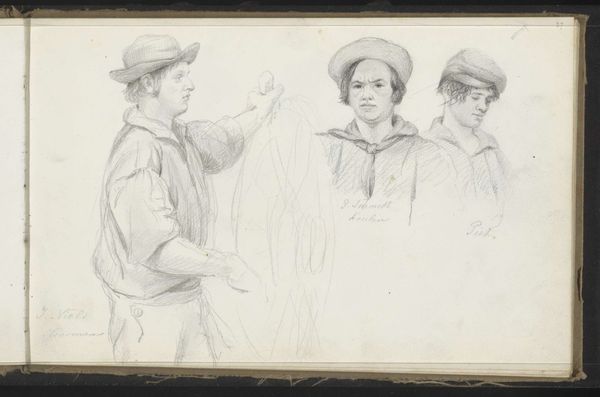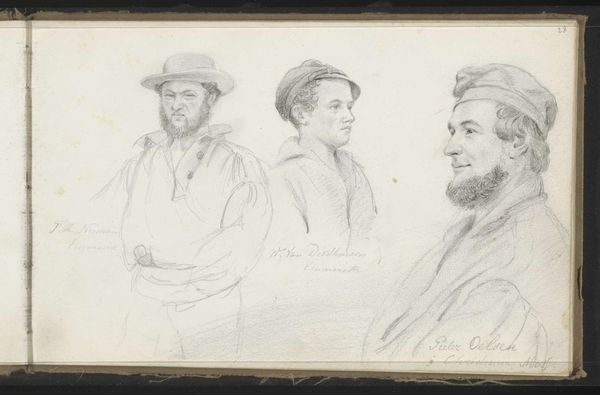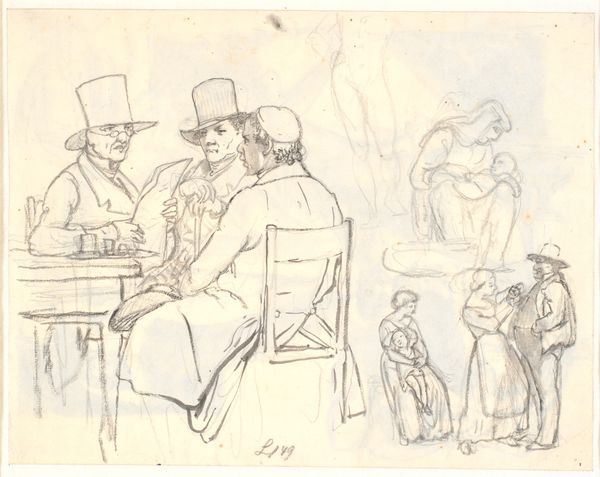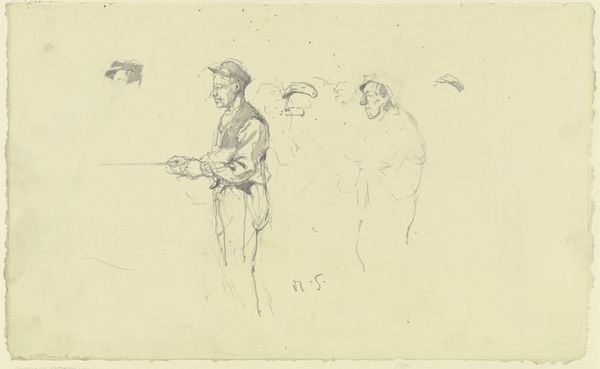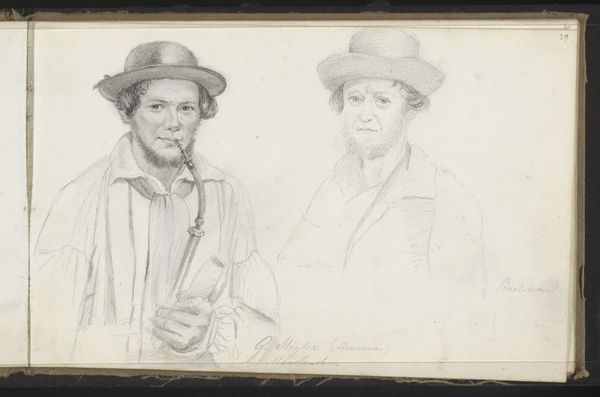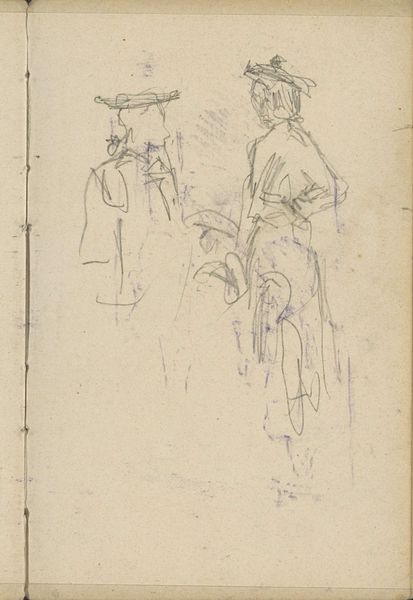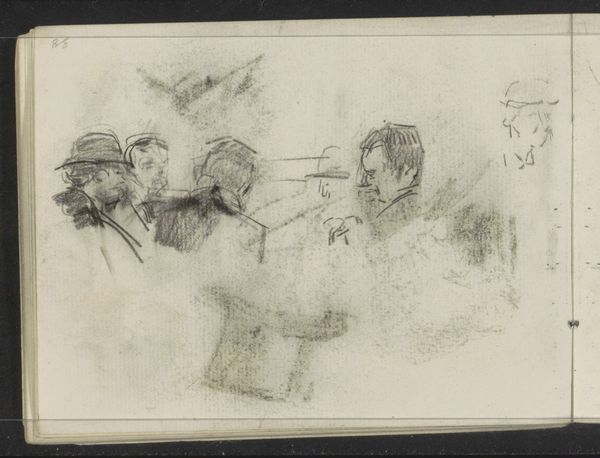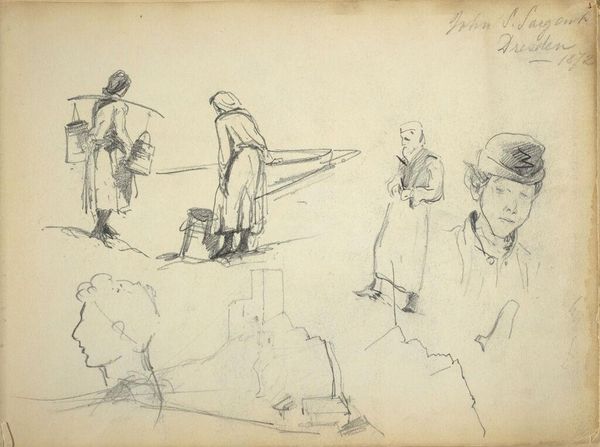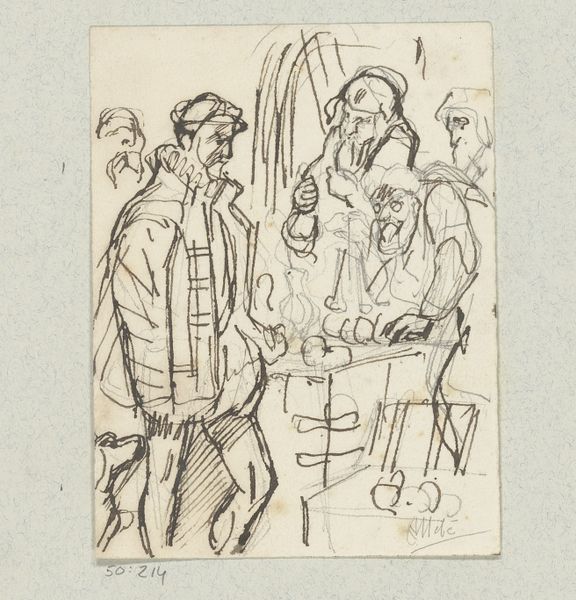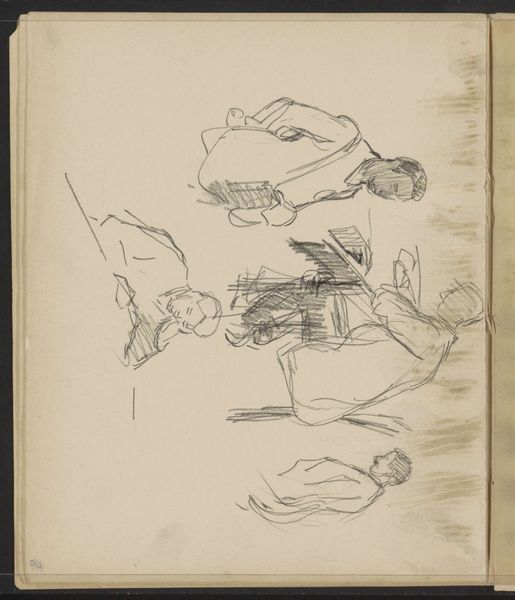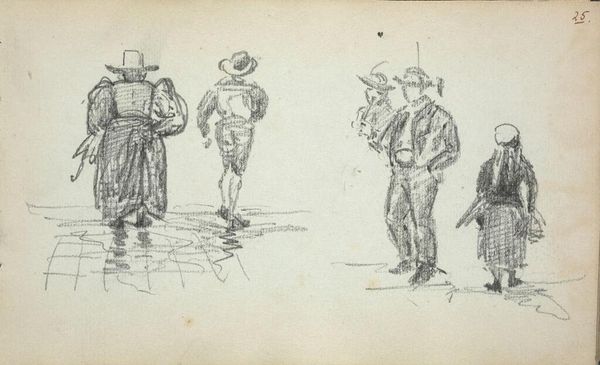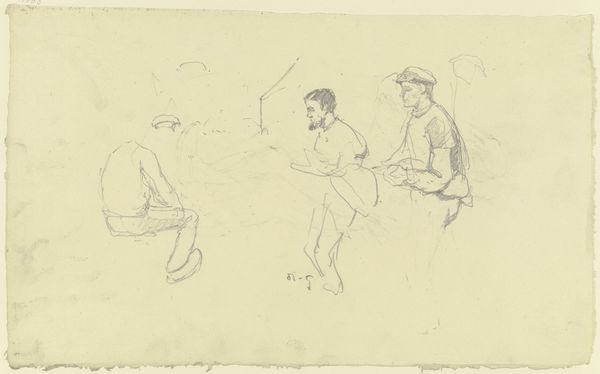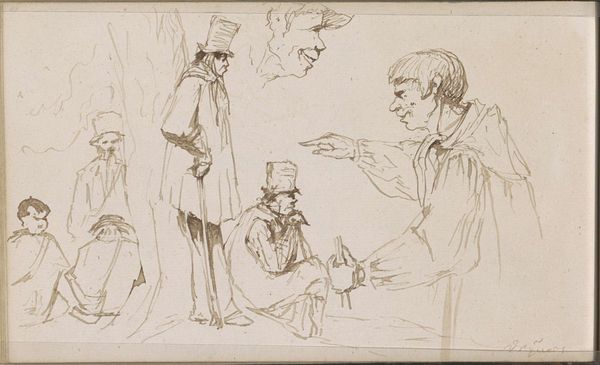
drawing, pencil
#
portrait
#
drawing
#
pencil sketch
#
pencil
#
genre-painting
#
academic-art
#
realism
Copyright: Rijks Museum: Open Domain
Curator: This piece is a pencil drawing entitled "Portretten van drie scheepslieden," or "Portraits of Three Seamen," created by Christian Heinrich Gottlieb Steuerwald sometime between 1848 and 1854. Editor: The sketch evokes a quiet sense of maritime life; the details captured are evocative, the men seem momentarily paused during their labor. I'm struck by how each figure bears their own subtle iconography in pose and attire. Curator: Precisely! The realism suggests a documentary impulse, likely for professional purposes or personal record of individuals tied to a very specific socio-economic reality: that of seamen working and living in a globalized shipping industry. This visual culture tells its own historical narrative. Editor: Notice the hats, those symbols of a seafaring identity and resilience; and those names scribbled on the bottom could give clues to cultural identity, social roots and emotional impact on diasporic lives. The soft pencil strokes seem almost like capturing a memory adrift. Curator: This type of portraiture became especially prevalent in port cities at this time. They capture the emergence of professional sailors, a distinct class shaped by increasing international trade and technological developments within ship construction. The image underscores how even apparently “everyday” art provides valuable insight into 19th-century economies. Editor: The central figure feels reminiscent of a classic hero—eyes soft, as if recollecting loved ones left behind in a time where months apart could transform people into strangers. Their very gestures convey powerful visual metaphor about the price of expansion. Curator: Indeed, an element easily missed is just how pervasive these representations became, fostering and normalizing colonialist endeavours. These sailors, after all, represent logistical arteries extending the economic and military reach of empires. Editor: An evocative drawing that lets us not just see faces, but understand what images silently speak and symbolize across histories and in individual lives.
Comments
No comments
Be the first to comment and join the conversation on the ultimate creative platform.
